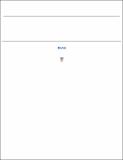Por favor, use este identificador para citar o enlazar a este item:
http://hdl.handle.net/10261/26309COMPARTIR / EXPORTAR:
 SHARE SHARE
 CORE
BASE CORE
BASE
|
|
| Visualizar otros formatos: MARC | Dublin Core | RDF | ORE | MODS | METS | DIDL | DATACITE | |

| Campo DC | Valor | Lengua/Idioma |
|---|---|---|
| dc.contributor.author | Aubourg, Santiago P. | - |
| dc.date.accessioned | 2010-07-15T09:18:17Z | - |
| dc.date.available | 2010-07-15T09:18:17Z | - |
| dc.date.issued | 2001 | - |
| dc.identifier.citation | Food Science and Technology International 7(3): 199-215 (2001) | en_US |
| dc.identifier.issn | 1082-0132 | - |
| dc.identifier.uri | http://hdl.handle.net/10261/26309 | - |
| dc.description | 18 pages, 5 figures, 10 tables.-- The PDF this article is free. | en_US |
| dc.description.abstract | From the moment the fish is caught till it arrives at the consumer as a canned product, raw matter is submitted to a variety of industrial steps. Thus, a storage process (namely, chilling or freezing) is needed for holding the raw material to be canned; a cooking step is normally employed for reducing moisture and inactivating endogenous enzyme activity; a rigorous thermal treatment (sterilization) is undertaken to inactivate micro-organisms; and a proper canned storage is necessary to guarantee good palatability of the product. As a result, labile and essential nutrients (proteins, vitamins, lipids, minerals) present in the raw fish are exposed to different processing conditions that can reduce the nutritional and sensory values of the final product. In the present work, detrimental changes produced in each of the steps involved in the manufacture of canned products are mentioned. This review is focused on nutritional and sensory losses in species commonly employed for canning preparation, and special attention is given to research concerning the effect of varying conditions of previous processing (chilling, freezing and frozen storage and cooking) on the quality of the final canned product. New and current technological strategies are recommended to increase the shelf life of previously stored material and to retain sensory and nutritional quality in the final canned product. | en_US |
| dc.description.sponsorship | The author acknowledges financial support for the Research Projects: ALI 88-0145-C02-02 (CICyT, Spain), ALI 90-0773 (CICyT, Spain) and XUGA 402 01B93 (Xunta de Galicia, Spain). | en_US |
| dc.format.extent | 404842 bytes | - |
| dc.format.mimetype | application/pdf | - |
| dc.language.iso | eng | en_US |
| dc.publisher | Sage Publications | en_US |
| dc.rights | openAccess | en_US |
| dc.subject | Fish | en_US |
| dc.subject | Chilling | en_US |
| dc.subject | Freezing | en_US |
| dc.subject | Cooking | en_US |
| dc.subject | Sterilization | en_US |
| dc.subject | Canning | en_US |
| dc.subject | Quality | en_US |
| dc.title | Review: Loss of Quality during the Manufacture of Canned Fish Products | en_US |
| dc.type | artículo | en_US |
| dc.identifier.doi | 10.1106/4H8U-9GAD-VMG0-3GLR | - |
| dc.description.peerreviewed | Peer reviewed | en_US |
| dc.relation.publisherversion | http://dx.doi.org/10.1106/4H8U-9GAD-VMG0-3GLR | en_US |
| dc.type.coar | http://purl.org/coar/resource_type/c_6501 | es_ES |
| item.fulltext | With Fulltext | - |
| item.languageiso639-1 | en | - |
| item.openairecristype | http://purl.org/coar/resource_type/c_18cf | - |
| item.openairetype | artículo | - |
| item.cerifentitytype | Publications | - |
| item.grantfulltext | open | - |
| Aparece en las colecciones: | (IIM) Artículos | |
Ficheros en este ítem:
| Fichero | Descripción | Tamaño | Formato | |
|---|---|---|---|---|
| 199.pdf | 395,35 kB | Adobe PDF |  Visualizar/Abrir |
CORE Recommender
SCOPUSTM
Citations
78
checked on 30-mar-2024
WEB OF SCIENCETM
Citations
62
checked on 28-feb-2024
Page view(s)
598
checked on 22-abr-2024
Download(s)
1.227
checked on 22-abr-2024
Google ScholarTM
Check
Altmetric
Altmetric
NOTA: Los ítems de Digital.CSIC están protegidos por copyright, con todos los derechos reservados, a menos que se indique lo contrario.
